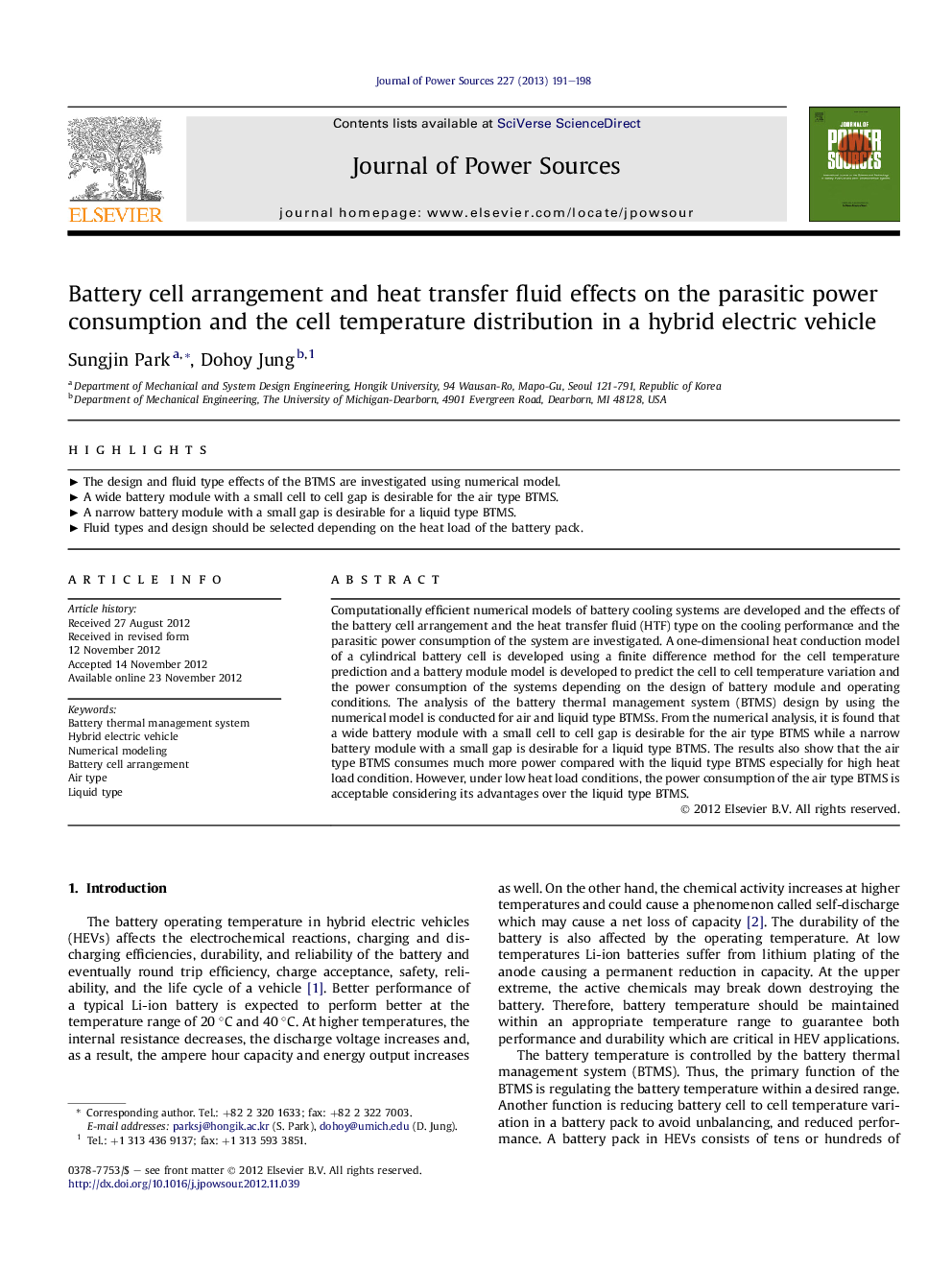| Article ID | Journal | Published Year | Pages | File Type |
|---|---|---|---|---|
| 1288305 | Journal of Power Sources | 2013 | 8 Pages |
Computationally efficient numerical models of battery cooling systems are developed and the effects of the battery cell arrangement and the heat transfer fluid (HTF) type on the cooling performance and the parasitic power consumption of the system are investigated. A one-dimensional heat conduction model of a cylindrical battery cell is developed using a finite difference method for the cell temperature prediction and a battery module model is developed to predict the cell to cell temperature variation and the power consumption of the systems depending on the design of battery module and operating conditions. The analysis of the battery thermal management system (BTMS) design by using the numerical model is conducted for air and liquid type BTMSs. From the numerical analysis, it is found that a wide battery module with a small cell to cell gap is desirable for the air type BTMS while a narrow battery module with a small gap is desirable for a liquid type BTMS. The results also show that the air type BTMS consumes much more power compared with the liquid type BTMS especially for high heat load condition. However, under low heat load conditions, the power consumption of the air type BTMS is acceptable considering its advantages over the liquid type BTMS.
► The design and fluid type effects of the BTMS are investigated using numerical model. ► A wide battery module with a small cell to cell gap is desirable for the air type BTMS. ► A narrow battery module with a small gap is desirable for a liquid type BTMS. ► Fluid types and design should be selected depending on the heat load of the battery pack.
